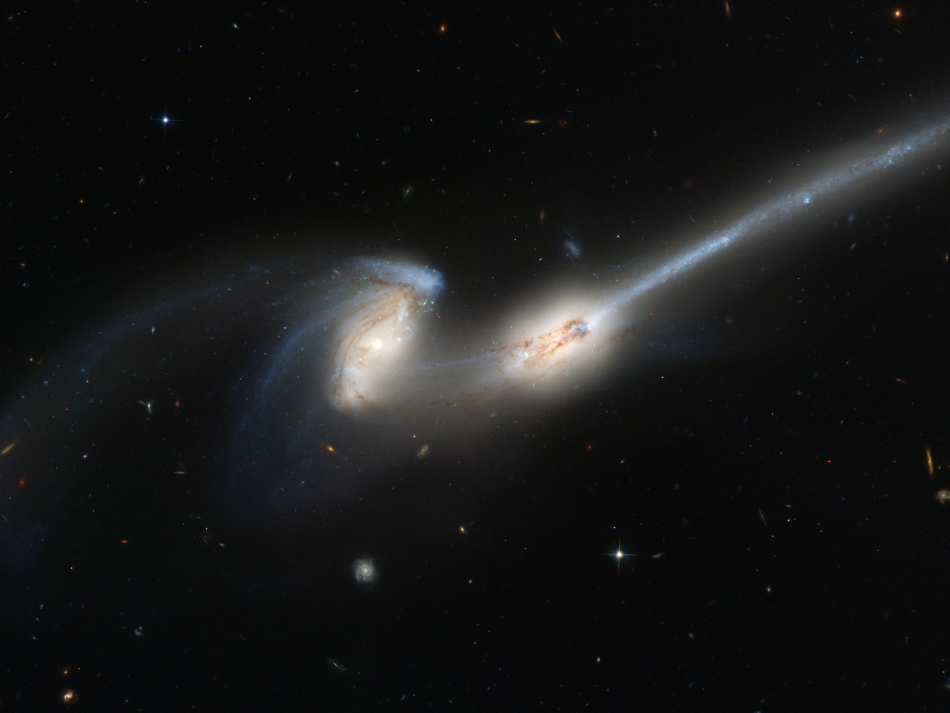Jun 1 2020
Active galactic nuclei (AGNs) have a key role to play in the evolution of galaxies. Astronomers at SRON Netherlands Institute for Space Research and the University of Groningen (RuG) have confirmed that mergers of galaxies have a positive impact on igniting AGNs.

Two galaxies merging. Image Credit: Hubble Space Telescope
The astronomers achieved this by using a record-sample of galaxies, and with the help of a machine-learning algorithm, they could compile nearly 10 times more images of merging galaxies than earlier studies.
In astronomy, one of the major puzzles is how galaxies grow from clouds of dust and gas to the stunning spiral structures observed in the Galactic neighborhood. The so-called active galactic nuclei (AGNs) are fascinating research objects to find a solution to part of the question since there seems to be co-evolution between galaxies and AGNs.
AGNs foster supermassive black holes that discharge enormous amounts of energy once they accumulate gas from their surroundings. A few of them have gravitational or magnetic fields sufficiently large to spew out jets from their poles, which extend to thousands of light-years.
Co-evolution is a two-way process. Firstly, a galaxy’s evolution stage has an impact on AGN activity. At a specific stage in the evolution of a galaxy, AGNs appear to thrive since it is observed that AGN activity peaks in galaxies at a specific distance, and hence at a specific time in the past.
On the other hand, AGN activity has an impact on star formation in a galaxy. This could go either way. The jet from an AGN pushes gas away while propagating through the galaxy, thus forcing the gas to collide with other gas and forming clumps, which act as seeds for young stars. However, AGNs also release energy, thereby heating the gas and preventing it from cooling down and condensing into clumps.
At present, astronomers at SRON and RuG, including Lingyu Wang and Fangyou Gao, have used a sample with a record-number of galaxies to analyze one of the factors that presumably has a positive influence on igniting AGNs: mergers between galaxies.
They have, in fact, found a correlation, counting both ways. They count nearly 1.4 times more AGNs in mergers compared to those in non-mergers. And on the other hand, they report nearly 1.3 times more mergers in samples of galaxies with an AGN than samples of galaxies without an AGN.
A machine-learning algorithm was used by the researchers to identify mergers. It offers a sample that is around an order of magnitude larger compared to those found in earlier studies, rendering the correlation more reliable than ever.
We have built a network to train the system to recognize mergers in a lot of pictures. This enables us to use a large sample of two telescope surveys with tens of thousands of galaxies. AGNs are relatively ease to recognize, based on their spectrum. But mergers are classified from images, which is typically a human’s job. With machine-learning, we can now have computers do this for us.
Fangyou Gao, Study First Author, SRON Netherlands Institute for Space Research
Journal Reference:
Gao, F., et al. (2020) Mergers trigger active galactic nuclei out to z ∼ 0.6. Astronomy & Astrophysics. doi.org/10.1051/0004-6361/201937178.